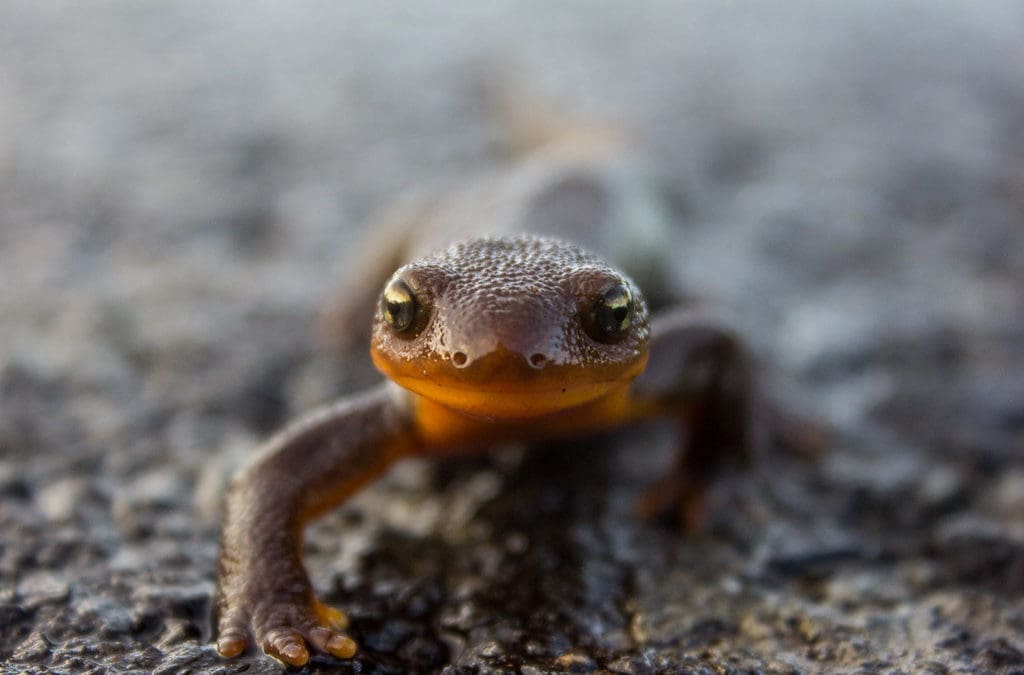Axolotl Questions About Our Native Salamanders
Frogs are our most vocal amphibians, and we have a number of species here in Washington. But our diversity of wetlands and streams, from lowlands to mountains also provide a multitude of habitats for our other big amphibian family, the salamanders. There are 13 species of salamanders that call Washington home, and King County is home to six of them:
Rough-skinned newts, Taricha granulosa, (<9cm) are found in grasslands, woodlands, and forests, and prefer slow, quiet water.
* Northwestern salamanders, Ambystoma gracile, (<13cm) prefer moist habitats near fresh water, spending most of their time underground or under rotting logs.
* Long-toed salamanders, Ambystoma macrodactylum, (<9cm) like moist vegetation near water in forests,prairies, or meadows, and live mostly underground in rodent burrows.
* Pacific giant salamanders, Dicamptodon tenebrosus, are the largest in the PNW, reaching (33cm) 13” in length! They are more likely to be found at higher altitudes, near cold, clear mountain streams next to forests or in mountain lakes and ponds.
* Ensatina salamanders, Ensatina eschscholtzii, (<8cm) prefer forested areas, butter sometimes found near clearings and grasslands. They like to stay under rotting logs but wander out on wet nights. These guys don’t need a permanent water source, and eggs are laid under rotting logs; the juveniles hatch as full-formed, little salamanders and skip the swimming stage with gills.
* Western redback, Plethodon vehiculum, (<10cm) are found at up to 3750’ elevation on rocky, steep mountain slopes. They can be found in drier locations than other species, but prefer to be under rotting logs or rocks near small streams or springs in damp mountain forests. These, too, skip the aquatic larval stage and emerge as tiny salamanders.
During our monthly amphibian monitoring at SHADOW, two salamander species have been found in both egg and juvenile life stages; the long-toed salamander and Northwestern salamander. Like frogs, salamanders are very sensitive to changes in their environment. Changes in their numbers can reveal important information the health of an ecosystem. Because they are ectothermic (cold blooded), even small changes in temperature can be harmful to their health. They breathe through their skin, as well as their gills or lungs, so even small amounts of pollutants in the water can cause health and reproductive problems. And because they undergo metamorphosis, they have a complex development cycle that can be disrupted if the conditions in their habitat become unsuitable.
Axolotls are in the same family as two of our King County salamanders, Ambystoma, are native to Mexico, and are Critically Endangered. Large numbers are bred in captivity, but they are largely gone from the wild due to habitat loss. It’s up to all of us to make sure that we don’t lose our own native salamanders in the wild.
By: SHADOW intern, Shelley Pasco



Recent Comments